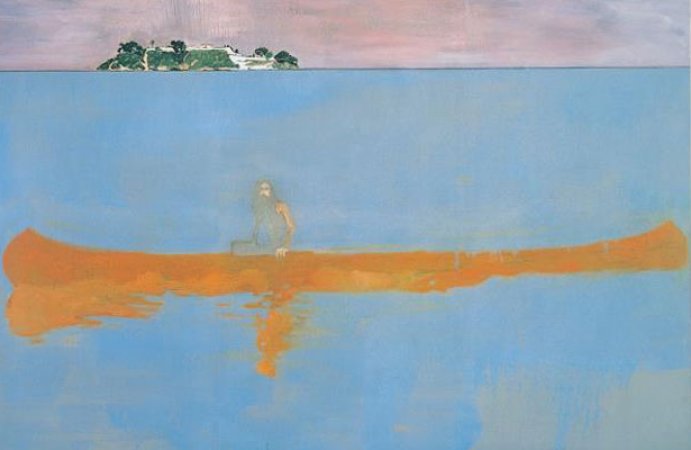Classical paintings of ships, on the other hand, tend to look a lot more like this:
Most people prefer the old styles. You don't have to look far to see stones thrown at modern art, to see people who want paintings to look like something, to be real instead of vague and pretty instead of "inspired". And when you see excesses like this, it's hard not to agree. Paintings that could be made in ten minutes by a child selling for $100 million? That's unfathomable to most people. At least if you spend $100 million on a Rembrandt, you get something that might be worth looking at occasionally.
So what happened? I mean, a few artists getting experimental is no surprise, but how did the inmates take over the asylum? Why did beauty get sacrificed for weirdness?
I'm not the first to posit this theory, but I think the trigger was technology, primarily the photograph. In days of yore, rich people wanted pictures of themselves and their ancestors to show off, and they hired painters to do them. Now, people who want pictures of themselves get pictures of themselves. Outside art classes, just about the only people who get proper portraits these days are national leaders. That undercut the market dramatically, and lead to a real drop in incomes for any would-be portrait painters. You can't make a living on that these days.
But think about this from the painter's point of view. You go into it to create beauty, and you had to work drawing Uncle Moneybags again and again. Sure, it makes you good at drawing the human form. but it had to be incredibly boring. For some non-artist who sees one painting a month, boredom's not an issue, but if you think in watercolours and acrylics, it's bound to grate after a while. And then the shackles were off - sure, you were starving, but practical sorts probably didn't become artists in the first place. The only ones still paying for your services were the ones who truly wanted what you did, wanted something that a painter could provide but a photographer couldn't.
If you're full to bursting on the same thing for decades, novelty is a powerful drug. Experiment, free yourself, see what can be done. Maybe there's whole new approaches nobody has tried, maybe you can make a different form of beauty that nobody has ever seen before. I mean really, what do you have to lose? You're not making a living on this stuff either way.
Even in fields where you can make a living - music, film, architecture, etc. - you see a lot of this trend. As soon as someone spends too much time on a creative endeavour, the same old will not satisfy them. Cliche gets oppressive. You know what the artist was thinking when he draws the Virgin Mary, and you know what the director is about do do before you watch the episode where he does it.
This means that the art community isn't producing things we dislike just to be weird, it's producing things we dislike because we're not the target market. It's like complaining that country music is annoying when you've never so much as sat in a pickup truck. Yeah, it annoys you, but why should they care?
The creative endeavours that rely on the mass market's money to keep going provide the masses with what we want. Tom Clancy and Chad Kroeger and Steven Spielberg make millions by appealing to people who like books and music and movies but who don't live them every waking moment. Even in painting, if you get away from the people who call themselves "artists" and start looking at the people who call themselves "graphical designers", you can find some things that are quite appealing to normal folks. (I'll throw in a gratuitous plug to my personal favourite, Digital Blasphemy, an artist who specializes in computer wallpapers). I will happily pay money for things I enjoy, and have done so - I'm a lifetime member of DB, and happily so, and of course creators of movies and music and games make a pretty penny off me as well.
As with a lot of the instinctive reactions I had to things as a teenager, I realize now that I was being kind of a jerk. If you enjoy a ghost in a fuzzy orange canoe, who am I to stop you? A lot of my hobbies are pretty crazy to people outside the appropriate fandom(the time I had to explain what Magic cards were to a US customs guard springs to mind here). I don't enjoy it myself, but it's not there for me to enjoy. Those who do should have fun. If you're going to be weird and talk exclusively to enthusiasts, at least do it with passion and vigor.


No comments:
Post a Comment